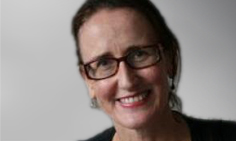FOR much of human history, parents must have needed to be cautious about bonding with their newborn babies, perhaps waiting months or even years until they could be confident of the child’s survival.
Although reliable figures are obviously hard to come by, it has been estimated that 40%‒60% of children in prehistoric times died before the age of 5 years.
Childhood mortality* remained high around the world until the 20th century, with estimates for 19th century Europe at 20%‒30%.
The most dangerous period for humans has always been the first year of life.
In Australia at the start of the 20th century, 10% of female and 12% of male babies did not make it to their first birthday.
Thanks to the medical and public health advances of the last century, Australia’s infant mortality rate has plummeted to 2.8 deaths per 1000 live births, according to new global research published in The Lancet last week. This is no cause for complacency, however, as Australia ranks well below the world leader, Japan, where the rate is just 1.1 per 1000.
And we cannot forget that Indigenous infant mortality remains about twice the rate of that in the non-Indigenous population, despite improvements in recent decades.
Still, looking at the global data in The Lancet series provides a sobering reminder that Australian babies are relatively fortunate in their place of birth.
The most dangerous place to be born in the world today is Africa: nine of the 10 countries with the highest infant mortality rates are on that continent.
Top of the list is Sierra Leone with 49.5 deaths per 1000 live births, closely followed by Somalia, Guinea-Bissau, Angola and Lesotho.
Pakistan is the only non-African nation on the list, with 42.2 deaths per 1000, although a number of other South Asian countries cluster just outside the top 10.
Many of these babies die without ever having their births recorded — 5.5 million each year, according to one Lancet review article — and that invisibility makes it harder to address the problem.
“Every day, 15,000 babies are born and die without ever receiving a piece of paper”, says lead author Professor Joy Lawn from the London School of Hygiene and Tropical Medicine in a media release. “The lack of recording reflects the world’s acceptance that these deaths are inevitable.”
She believes fatalism about infant mortality has impeded efforts to reduce it, despite nearly all the deaths being preventable.
Just as our ancestors may have waited until they were confident a child was going to survive before allowing themselves to become too attached, parents in some of the most affected countries today may feel the need to adopt similar defence mechanisms.
“There is still a woeful acceptance of newborn deaths as inevitable in some cultural settings in high-burden countries”, says a commentary published alongside The Lancet series. “Practices such as delaying the naming of a newborn baby continue.”
What can be done?
The greatest opportunities for saving lives are through investment in quality care around the time of birth and in special care for low-birthweight and ill infants, The Lancet says.
Nothing too surprising there, but perhaps less obvious is the argument that increasing girls’ and women’s access to sex education and family planning services could reduce the birth rate, and therefore the death rate, by about half.
Meeting unmet needs for family planning could help to delay age at first pregnancy and increase intervals between pregnancies, one article in The Lancet series finds — important because adolescent pregnancy and closely spaced pregnancies carry higher risk for both mothers and babies.
Perhaps the biggest challenge of all is to end the silence around stillbirth and neonatal death — if these deaths remain invisible and unrecorded, the momentum for change will be hard to find.
If a tree falls in the forest and there is nobody to hear it, does it make a sound?
Jane McCredie is a Sydney-based science and medicine writer.
* Childhood mortality = deaths before age 5 years; infant mortality = deaths before age 1 year

 more_vert
more_vert
Infant mortality includes NEONATAL mortality, which, in Australia, is also vanishingly small. After the neonatal period, infant and child mortality are very much influenced by nutrition and infectious diseases. INtra-partum and early neonatal mortality are influenced by access to modern midwifery and obstetrics. INtra-partum emergencies in the developed world are the same as throughout the world – obstructed labour and bleeding. It is ironic that there is a (small) movement in our society that rejects modern, hospital-based midwifery and obstetrics while other parts of the world are crying out for it. Spectrum bias at work again.
In those unfortunate states with high infant mortality, perhaps it is a relief to the mother that there is one less mouth to feed. Could some of these deaths be deliberate? Good family planning is the key to this disastrous situation.
KBO